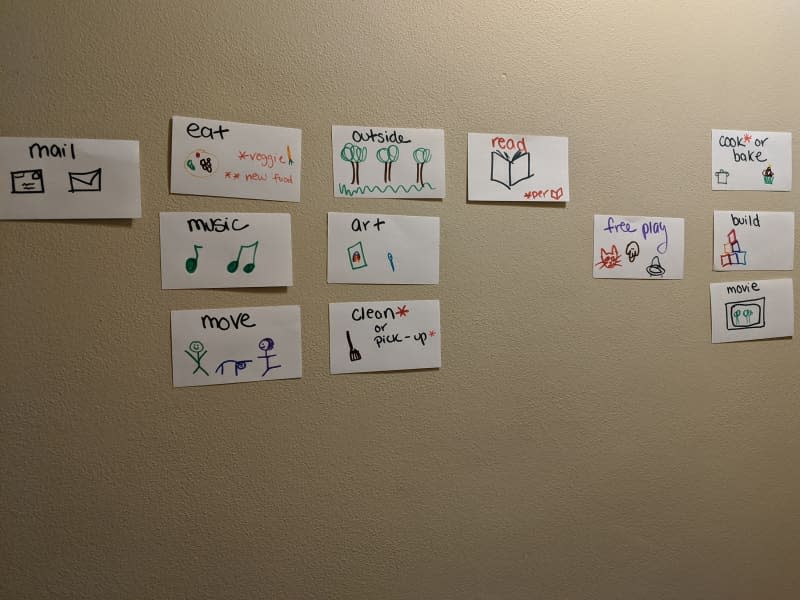I Tried the “Kanban Method” to Organize Every Aspect of My Life

My friends and I were having a casual discussion about how we motivate ourselves to get things done, and a friend of mine said she puts up Post-its with tasks and then works through them with visual reminders. I had a feeling this was a “thing with a name,” and sure enough, it’s the Kanban Method, a way to keep tasks organized in a visually satisfying way.
What Is the Kanban Method?
Kanban is a Japanese word meaning “signboard.” It was used in Toyota factories to keep track of unsold products and the use of various materials. Software companies adopted the method to track tasks, giving workers options on the cards for the next projects.
The basic idea is that you use notes, signs, or sticky notes to organize tasks. You can create a pool of “to do” tasks and divide it by person, team, stage, or category (work, medical, cleaning, etc). Then you can move the sign to an “in progress” location or simply move the sign to the “done” pile once the task is completed.
Many people implement the Kanban Method by using Post-its or other sticky notes. You can color code, use sticky notes of the same or different size, and use an actual board or just a blank wall to move tasks from “to do,” to “in progress,” to “done.” Some people have different tasks broken down into different phases of a project, assign tasks to certain people to help balance the load, or keep them in a pool for a whole team. You can also use them as an individual to help with productivity.
How I Tried the Kanban Method
Without knowing it was “a thing,” in the early days of the pandemic, I made a board in my hallway with various tasks. I drew pictures on the cards and taped them up with masking tape. The kids could grab a card and we’d do the activity (draw, watch a movie, scream into the void). It helped remove the “thinking” from the stressful and chaotic early days when there was no virtual school or daycare.
We abandoned the method along with our hope of ever returning to normal life after a few weeks. I’ve since used the Kanban Method, still without knowing what it was, in several capacities. Instead of making it for activities for my kids to do when bored (because to them the only task worth doing involves screens), I’ve used it for chores. Then, if they need to help out around the house, they’re not stuck suffering through putting away laundry. They can also organize their bookshelf or put their toys in bins. (They hate this, by the way, because it’s still chores.)
I’ve used the Kanban Method as a grown-up, too. When assembling packages for the school auction, a parent writes the gift card amount or object on a Post-it and sticks it on a table. As we put together packages, we move the Post-its around on the walls until we have a good balance of auction items and there is nothing left on the table.
Final Thoughts
This method works because it helps break down big tasks like “cleaning the house” into smaller actions like “unloading the dishwasher” or “moving laundry to the dryer.” Understandably, this system might not work for everyone, as it can be difficult to know what’s most important when everything is on a sticky note. That’s why I prefer having tasks that all have equal weight, like kid activities or auction items. For things with deadlines, like articles, I use a spreadsheet with the due dates in order. I still find myself working out of order a lot of the time, picking and choosing which projects I want to do first. Because I generally overachieve on work deadlines, this accidental Kanban works fine, but other people might need a hierarchy.
While the method was designed to be used with physical cards, I’ve implemented a similar strategy with task management in my Google Calendar, and there are several task management apps with Kanban programs. If something needs doing, I make it a task with or without a deadline. Spoiler alert: The tasks without deadlines rarely get done in a timely manner. I will remember to call the doctor if I’m having a health problem, but I don’t necessarily get on the ball for scheduling blood work if nothing’s wrong. However, when I do get to tick the item off my list, I find it extremely satisfying.

